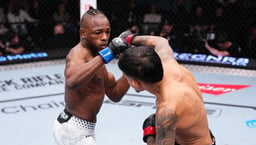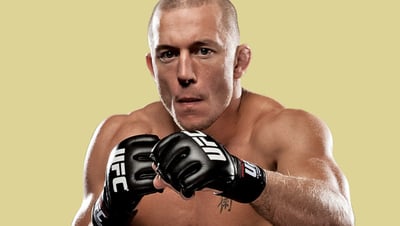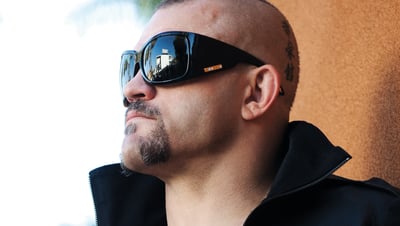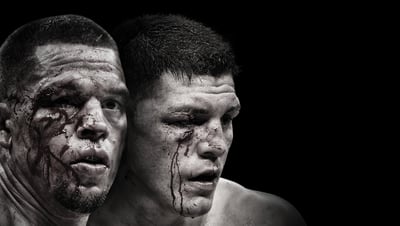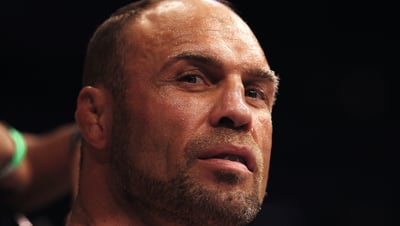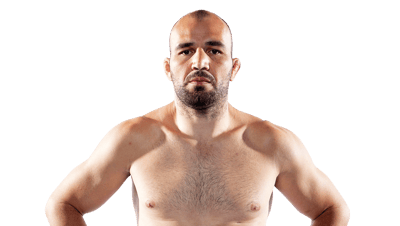
Issue 215
March 2025
Izzy Carnwath tells how one doctor’s televised beating helped launch one of the first serious pushes for MMA safety.
Werner Forssmann threaded a catheter into his own heart. Alexander Fleming tested penicillin on himself. John Paul Stapp strapped his feet to rocket sleds zooming at 600 mph. History’s bravest pioneers have often risked all in the name of science and in 2011, Dr. Jack Kreindler joined their ranks by stepping into a cage to get deliberately battered on live TV. He entered the cage at Ultimate Challenge in East London to get intentionally beaten by Nick ‘The Headhunter’ Chapman as part of a BBC show, ‘How to Beat Pain.’ As part of UCMMA’s card, Chapman was tasked to strike the slight doctor uniformly on both sides in front of an unsuspecting audience. The BBC program then storied Dr. Kreindler’s recovery, with just one side of his body rehabilitated. At the time, the docu-experiment could only happen in the UK as MMA was entirely unregulated. That meant anyone could put on an event on a whim, without license or regard for safety standards. Startled by the lack of regulation, the good doctor suggested establishing a unified medical safety standard for British MMA in discussion with UCMMA’s then-publicist Zara Shirwan, whom I was working with at the time. We got on the phone with Ian Dean, renowned matchmaker for UCMMA’s nemesis Cage Warriors, to float the idea. He pointed us toward referee Marc Goddard and pioneering female fighter Rosi Sexton, known for their commitment to best practice in the grassroots sport.
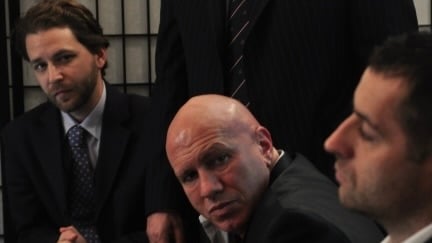
AN EXPERIMENTAL HYPOTHESIS
Goddard advised that the only workable way forward would be to get the UK’s three most prominent promoters into one room to agree to a workable standard.
“I guess the biggest achievement of Safe MMA was getting it off the ground at all,” he said. “Going back, people thought it was mad to try to get the three largest rival promotions, Cage Warriors, UCMMA, and BAMMA, together in one room.”
But we did. And so it was that the notorious Dave O’Donnell of UCMMA, BAMMA matchmaker Jude Samuel, and Cage Warriors’ President and Matchmaker Graham Boylan and Ian Dean became engaged in months of conversation advised by the medics, and mediated by Goddard, Sexton, along with commentator John Gooden. As an administrator, I witnessed the evolution of the founding voluntary agreement between the promoters, who, while continuing to roast and sabotage each other publicly behind closed doors, shared mutual concerns about fighter risk, welfare, and liability. Safe MMA was finally announced in the autumn of 2012 to a taken aback UK MMA scene, with UFC representatives attending the launch press conference, and the project went live at UCMMA 32 in February 2013. All UK promoters, gyms, and fighters were urged to sign up.
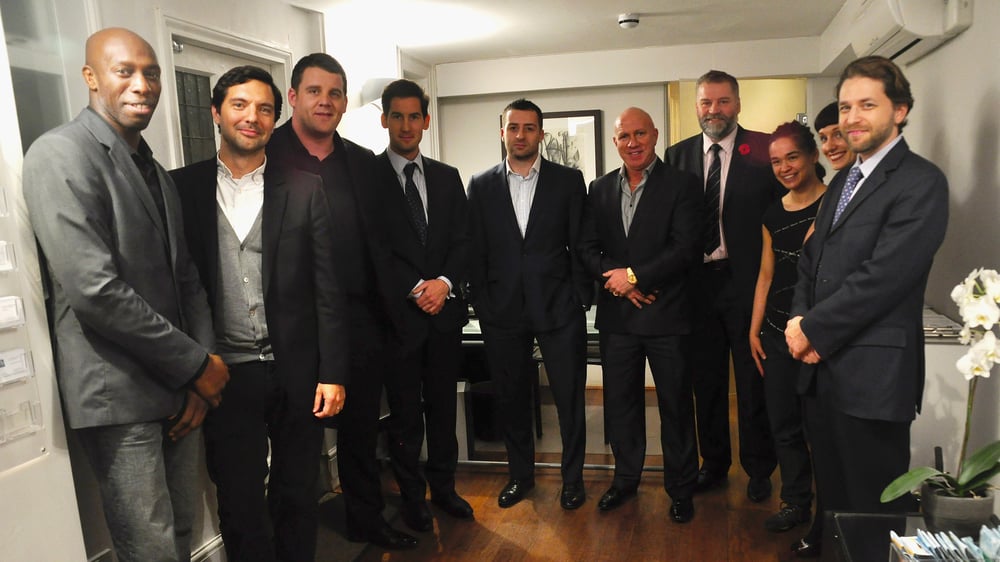
THE EMERGENCE OF SAFER FIGHTING
The Safe MMA agreement stated that all fighters on partner shows should be independently precleared to compete by Safe MMA based on 6-monthly blood tests (HIV, Hep B, Hep C) and annual GP medical examinations. It had been observed that some events relied solely on first aid volunteers and spent more on ring girls than fighter safety. Therefore, Safe MMA promoters committed to having qualified paramedics and ambulances onsite at events, plus an appropriately specialized doctor to conduct standardized pre- and post-fight medical checks. All medical data would be confidentially stored in Safe MMA’s central database with unified medical suspensions applied and adhered to by all partner promoters, using a publicly available traffic light system indicating fighters’ eligibility to compete.
The key was the separation between fight night doctors and the third-party medical team overseeing preclearance, with Safe MMA doctors crucially remaining voluntary and not profiting from the sport. Most notably, the Safe MMA medical team has provided independent advice and solutions to fighters regarding complex issues. At the same time, the project has identified life-threatening issues that have allowed for intervention.
FIGHTING FOR CHANGE
The early days of the project saw teething pains. Not all GPs were willing to carry out examinations for the unrecognized sport of ‘cage-fighting.’ It took work to build a viable network of MMA-friendly doctors willing to provide medicals at affordable rates. Implementation by promoters also faced resistance from some gyms, who cited the cost as a tax on fighting. Ultimately, the shows that persevered and were willing to pull fighters from the card who failed to comply were the ones that proved successful in the long run. By 2014, Safe MMA was able to move from being voluntarily managed to hire an administrator, Yoni Gottlieb.
Meanwhile, the medical team has remained volunteers to this day. Spearheaded by UFC fighter Aisling Daly, Safe MMA soon extended to Ireland, where it became the de facto regulatory standard enforced by local councils, venues, and gyms under the Irish Mixed Martial Arts Association following the tragic death of fighter Joao Carvalho in 2016. On the recommendation of the Irish courts, the incident prompted the addition of brain scans to the standard in Ireland, while promoters BAMMA (Bellator) and Cage Warriors voluntarily adopted these during the same period.
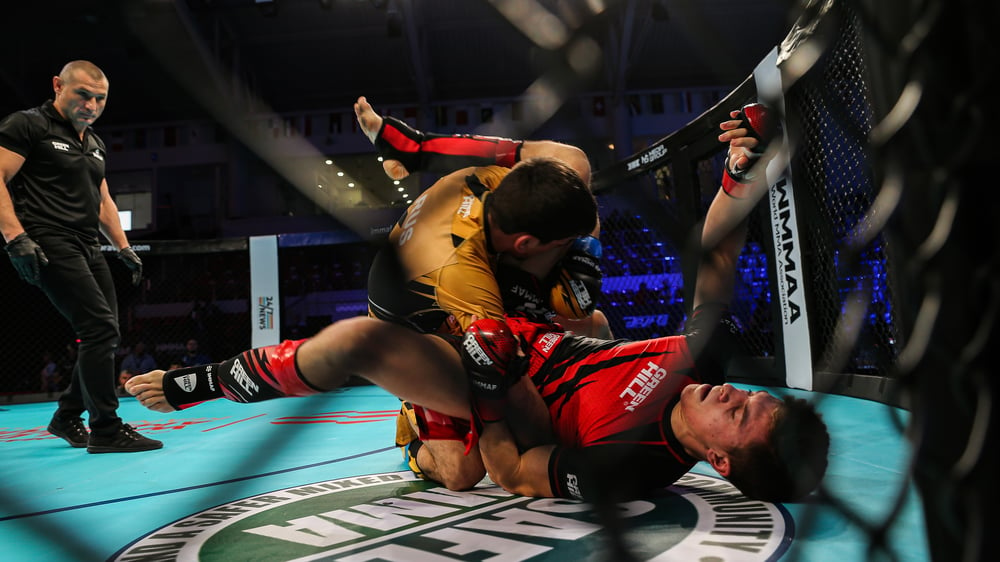
A NEW ERA
Safe MMA soon became recognized abroad by dealing with foreign fighters and international promoters. Partnering with the International Mixed Martial Arts Federation in 2015 to manage the preclearance of amateurs for international competitions led to an adoption of the standard across several countries. International shows that have partnered with Safe MMA when in the UK and Ireland include Bellator, PFL, KSW, and BRAVE. In 2018, the project achieved registered charity status.
When, in 2021, the government inquiry into concussion in sports put MMA under the spotlight, and BBC commissioner Tim Davies was called upon to justify the channel’s broadcast of Bellator, Safe MMA was able to provide a testimonial in support of Bellator. While larger established sports such as football were shown to lack independent medical oversight and to suffer from conflicts of interest, Safe MMA demonstrated an independent medical monitoring service for MMA that other sports lack. It remains a collective responsibility for charity trustee Marc Goddard, now chairman of the English Mixed Martial Arts Association.
“Just because there is no current guideline, lawful act or legislation to comply within the UK, that doesn’t mean that we shouldn’t be doing the right thing,” said Goddard. “We need to put a line in the sand, disassociate ourselves from anybody employing bad practice, and make sure that the sport is in good hands for the future.”
ASK A MEDIC: FIGHTER BRAIN RECOVERY
Dr. David Wang (USA) is a Sports Medicine physician with 30 years of experience working with athletes, including kickboxers and MMA competitors. He is the medical director of a concussion clinic, a member of the medical committee of IMMAF, and a contributing doctor to Safe MMA. MMA is a high-contact sport involving strikes to the head. Recovery is essential in training, not just recovery of the body but also that of the brain. Here, Dr Wang advises on the top 5 tips for brain recovery during training for athletes.
Exercise plenty
Try to get plenty of aerobic exercise, which directly benefits the brain.
Get at least 8 hours of sleep
This is critical as this is the time that the body repairs itself and regenerates. During sleep, the muscles and the brain recover and repair.
Avoid alcohol
Alcohol decreases REM sleep, a critical time when the brain recovers during the sleep cycle.
Eat a healthy diet
To repair and regenerate, the body needs wholesome nutrition. This consists of a balanced diet but also can be augmented with sources of antioxidants such as those found in blueberries.
Increase your meditation quota
This is also beneficial as it can decrease stress, which is unhealthy for the brain. Meditation can be active and as simple as going for a relaxing walk.
In addition to these general principles during training, there are other things that one can do to help with brain injury and recovery.
1. Physical rest, which is achieved by taking breaks during training sessions and avoiding dehydration. Rest also includes taking breaks, light training days, or cross-training. Too much training without recovery can lead to overtraining, where your performance will suffer.
2. Limit exposure to head trauma, when possible, which means minimizing blows to the head and avoiding unnecessary head trauma. Using protective equipment when possible to help decrease forces to the head and body.
4. Strengthening the neck can also help decrease forces to the head and brain.
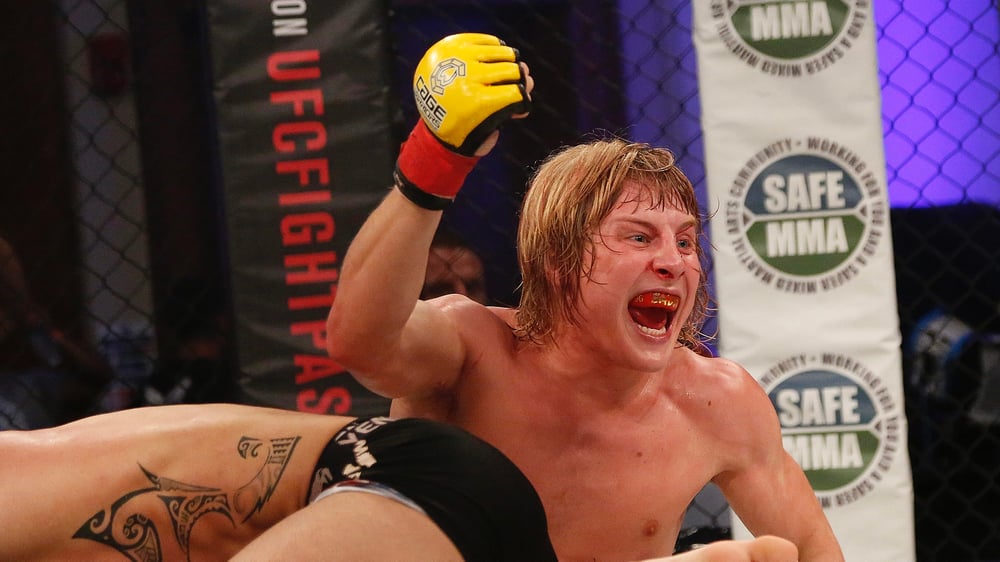
WHAT SHOULD COACHES DO
1. Proper techniques must be drilled.
2. Do not overtrain - especially in one area.
3. Watch for signs or symptoms of concussion and remove them from risk if there is a concern. Seek attention from a health provider experienced in concussion care is recommended.
4. Schedule breaks. Hydration and nutrition but also taper in the training schedule.
5. Use sparring partners with appropriate skill levels.
POST-COMPETITION ADVICE FOR FIGHTERS
1. Be familiar with and identify signs and symptoms of concussion.
2. Recover - Recover (sleep/nutrition). Let the body repair itself
3. Avoid over-scheduling events.
4. If suffering a loss via KO, do not look only at suspension times for clearance to spar or fight again. Ensure you are truly recovered (check for symptoms, sleep, vision, reaction time, and resting heart rate). If not or unsure, it is better to seek medical attention.
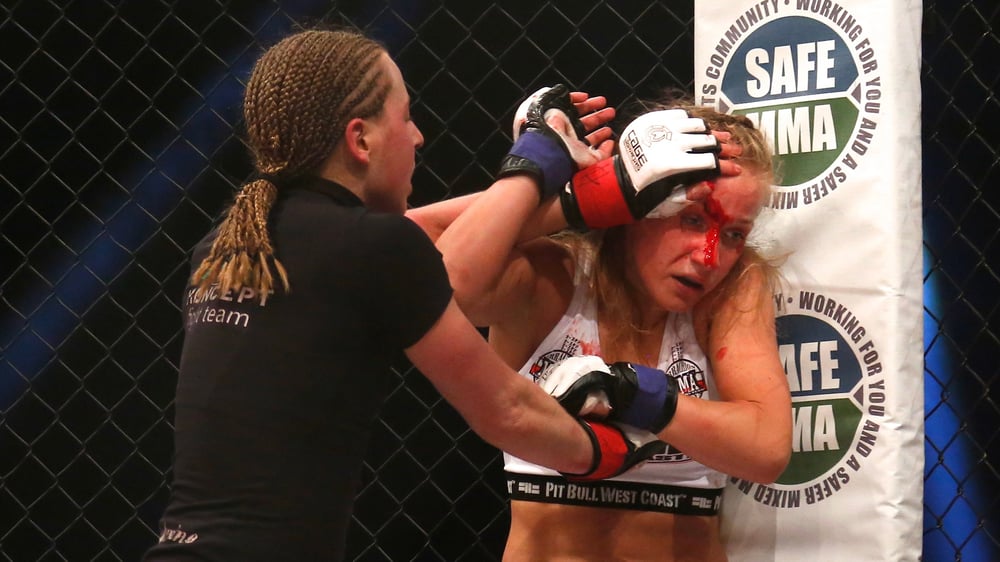
THE PATH FORWARD
More than a decade later, Safe MMA remains a rare example of collective action in a sport built on individualism. Born from one doctor’s bruised body and a chaotic fight scene, it stitched together promoters, medics, and fighters who all knew something had to change. While full compliance remains a work in progress, especially in the UK, the blueprint exists. Voluntary, independent, and built on doing the right thing when no one’s forcing you to. It’s not perfect, but it’s proof that progress in MMA doesn’t always begin with a punch. Sometimes, it starts with a plan.


